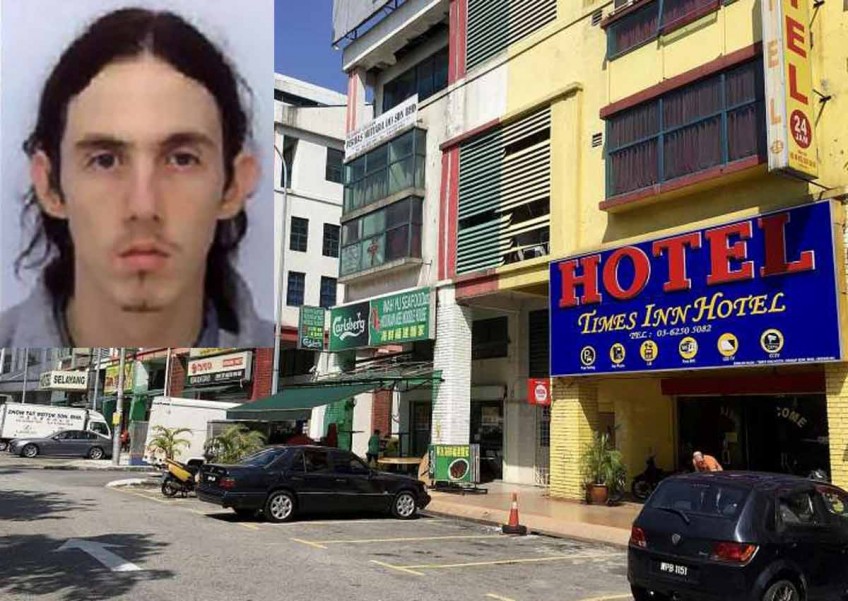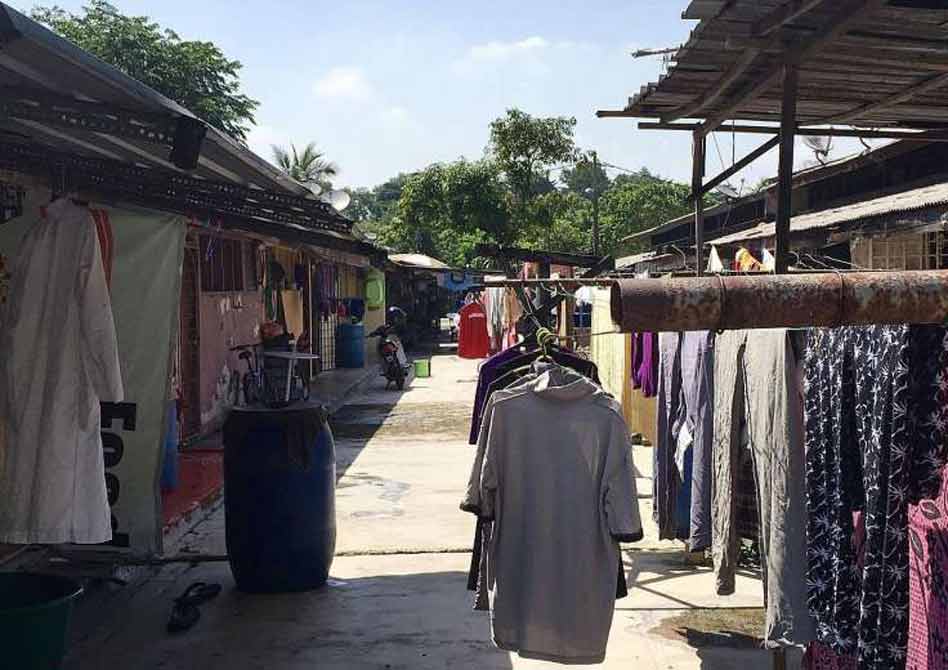Journalist retraces the steps of paedophile Richard Huckle

Briton Richard Huckle lived for over a year in a row of rundown longhouses near an affluent Kuala Lumpur neighbourhood where he preyed on at least 23 children from poor Malaysian families. The paedophile's horrendous crimes were exposed only after he was arrested in London in December 2014. The Sunday Times visits the longhouses and retraces some of Huckle's steps.
The rows of longhouses where the crimes took place are located near Taman Tun Dr Ismail, an upscale suburb less than 15km from downtown Kuala Lumpur.
It was in one of these dwellings that Briton Richard Huckle lived for over a year, separated by thin wooden walls from his victims who ranged in age from just six months to 13 years old.
The longhouses are provided by the Kuala Lumpur city council for blue-collar families, with each longhouse consisting of several family homes. It is a far cry from the neat bungalows and posh condos at Taman Tun Dr Ismail but, then again, in Malaysia as in much of the Third World, the rich and the poor often live side by side.
Huckle, 30, sexually abused 23 Malaysian children repeatedly, with British investigators saying there could have been up to 200 child victims during the nine years he spent around Kuala Lumpur's suburbs.
Since news of his crimes broke last week, revulsion and deep anger have gripped many Malaysians.
Details that emerged in media reports have fanned those flames.
Sky News reported on Huckle's blog hidden on the dark Web - an encrypted part of the Internet often used for illegal activities.
"It's not often in child porn that you can compare the bodies of a five-year-old and a 12-year-old that are the same girl," he wrote.
"I'm sure I'll have plenty more sex with (her) in the future... I hope, from the images you have seen, (you) enjoyed watching her grow."
According to investigation papers seen by The Sunday Times, Huckle targeted vulnerable communities which were "extremely trustworthy, naive, close-knit, religious and poorly educated".
He admitted to 71 charges of sex abuse against children in Malaysia and Cambodia, and is now serving 22 life sentences for his crimes.
Related: A monster who posed as a good, religious person

British paedophile Richard Huckle moved into this longhouse village in 2013. Posing as an English tutor and photographer, he gained access to his young victims and abused them repeatedly. He is now serving 22 life sentences for his crimes in a British jail.
In at least one Malaysian community - all of which were made up of poor Indians - Huckle abused a quarter of all the children under the age of 18.
He moved freely in the community as he had advertised his services as a tutor and photographer. He also volunteered at churches and care homes that took in orphans and less fortunate children who usually had single mothers with financial troubles.
He took an English teaching course at the British Council in 2008 and enrolled in a Malaysian college in 2011. At that time, he lived in an apartment in Setapak, Kuala Lumpur, not far from the Community of Praise (COP) church that he attended for several years.
A source familiar with the investigations told The Sunday Times: "A person from that community who sees a white Christian man who wants to volunteer and help children will be very trusting and grateful."
But the scene at the wooden longhouses, whose residents are mostly menial workers, has been anything but serene over the past week.
Local and international press started quizzing residents there after the story broke, prompting community leaders to issue a gag order.
Village head V. Sundram, 65, told The New Straits Times last week that Huckle first came to the village in April 2013 during a Tamil New Year festival at the neighbourhood temple to take photos.
Related: Huckle fooled longhouse residents
He had also visited at least two churches and care homes.
According to Saravanan Caring Homes chairman Muneswaran Munusamy, Huckle had shown up twice to pick up two cousins, aged seven and 13, to take them to COP church around 2013 and 2014.
He said he refused to allow it as Huckle was a foreigner. "But then the mother called and said she was at the church and had no transport (for the children)," he added.
COP church pastor Paul Packianathan told The Sunday Times that Huckle showed up only occasionally and "has nothing to do with the church". The last time he appeared was when he was with two girls without their parents.
"I told him the next time I want to see the parents. After that, he never came back," said Mr Packianathan.
Huckle was by then already building a vast collection of child porn on the dark Web containing some 20,000 photos and videos, including 1,000 of him raping or sexually abusing children, according to investigators. He tried to sell images of his exploits, awarded himself "pedopoints" for his acts and admitting to having 191 victims.
"Pedopoints" was a scoring system he set up to tally each instance of abuse, reported British media.
Even on publicly accessible photo-sharing sites, Huckle uploaded photos of children stripped and topless playing in the sea at Port Dickson, a popular beach in Negeri Sembilan, as well as at the KLCC Park, surrounded by families going about their own business beneath the iconic Petronas Twin Towers.
In the British court at his first plea hearing, it took more than an hour to read out the charges against him.
Of the 71 charges of sex offences he admitted to, 22 carry discretionary life sentences and 18 are multiple incident counts, the British media reported.
The charges that he admitted to were graphically listed in court. They included 14 rape charges, 31 sexual assault charges, one count of making photographs and one of advertising indecent photographs.
Huckle had shared pictures and videos of his crimes with other paedophiles around the world and was writing an online guide on how to exploit poor children, the Mail Online reported.
He had even "crowd-funded" his first child sex video and was aiming to make money by hawking his perversions online at the time of his arrest, the Old Bailey heard.
Malaysia's police said that British officials did not hand over enough information to allow for local investigations, when the public queried them on why they were slow in handling the case.
Inspector-General of Police Khalid Abu Bakar said British officials were unable to provide the police with details of Huckle's victims and activities as Malaysia's death penalty made it difficult for the them to co-operate fully.
Sharmila Sekaran, co-founder of child-rights group Voice of the Children, said that Malaysians preferred to be "blissfully unaware" and live in denial of such abuses.
Investigative journalist Mahi Ramakrishnan, who has met some of Huckle's victims, told The Sunday Times that the father of one girl "just kept quiet and told her to keep quiet". Her grandmother also failed to act when told about indecent photos being taken of the girl.
British investigators found that at least one community leader "did not feel empowered enough to support the children from further harm at the hands of Huckle".
At COP church, Mr Packianathan said he had spoken to his church leaders about Huckle and found that no children from the congregation had been abused.
"My priority is to my flock. I have to take care of them," he said.
Related: How Huckle was caught
HUCKLE'S STAY IN MALAYSIA
2005: Huckle first visits Malaysia, begins uploading pictures of children online
2006: Starts abusing children in Malaysia and Cambodia
2007: Becomes a volunteer tutor
2008: Takes English teaching course at the British Council
2011: Enrols at Kuala Lumpur Metropolitan University College and works as a freelance photographer
2012: Stays in an apartment in Setapak, near a church that he attends
2013: Lives with poor Indian community in Taman Tun Dr Ismail
2014: Arrested when he returns to the United Kingdom for Christmas
Read also: Growing pressure on Malaysian authorities over handling of paedophile case

This article was first published on June 12, 2016.
Get a copy of The Straits Times or go to straitstimes.com for more stories.